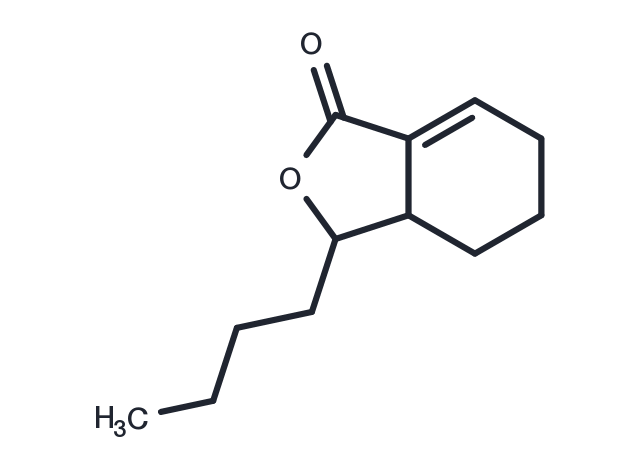Powder: -20°C for 3 years | In solvent: -80°C for 1 year


Sedanolide is a natural phthalide first isolated from seed oil of the Umbelliferae family, including celery.

| Pack Size | Availability | Price/USD | Quantity |
|---|---|---|---|
| 1 mg | In stock | $ 48.00 | |
| 5 mg | In stock | $ 108.00 | |
| 10 mg | In stock | $ 160.00 | |
| 25 mg | In stock | $ 266.00 | |
| 50 mg | In stock | $ 395.00 | |
| 100 mg | In stock | $ 587.00 | |
| 1 mL * 10 mM (in DMSO) | In stock | $ 120.00 |





| Description | Sedanolide is a natural phthalide first isolated from seed oil of the Umbelliferae family, including celery. |
| In vitro | Sedanolide suppressed J5 cell viability by inducing autophagy. Phosphoinositide 3-kinase (PI3K)-I, mammalian target of rapamycin (mTOR) and Akt protein levels decreased, whereas PI3K-III, LC3-II and Beclin-1 protein levels increased following Sedanolide treatment in J5 cells. In addition, Sedanolide treatment upregulated nuclear p53 and damage-regulated autophagy modulator (DRAM) and downregulated cytosolic p53 and Tp53-induced glycolysis and apoptosis regulator (TIGAR) expression in J5 cells. Furthermore, the cytosolic phosphorylation of inhibitor of kappa B (IκB) and nuclear p65 and the DNA-binding activity of NF-κB increased after Sedanolide treatment. These results suggest that Sedanolide induces J5 cell autophagy by regulating PI3K, p53 and NF-κB autophagy-associated signaling pathways in J5 cells. |
| Molecular Weight | 194.27 |
| Formula | C12H18O2 |
| CAS No. | 6415-59-4 |
Powder: -20°C for 3 years | In solvent: -80°C for 1 year
DMSO: 9 mg/mL (46.33 mM)
You can also refer to dose conversion for different animals. More
bottom
Please see Inhibitor Handling Instructions for more frequently ask questions. Topics include: how to prepare stock solutions, how to store products, and cautions on cell-based assays & animal experiments, etc.
Sedanolide 6415-59-4 Autophagy Others inhibit Inhibitor inhibitor
